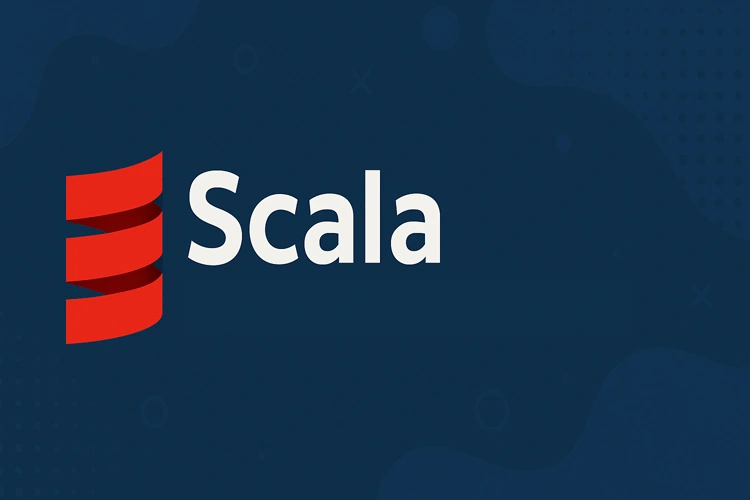Top 60 Scala Interview Questions And Answers
 Over the years, there has been a massive increase in the use of Tableau. It is a BI software used for the visual representation of data from different sources. Tableau streamlines the process of data analysis, data representation, and data exploration through its in-built features.
Over the years, there has been a massive increase in the use of Tableau. It is a BI software used for the visual representation of data from different sources. Tableau streamlines the process of data analysis, data representation, and data exploration through its in-built features.
Today, majority of big fortune companies use Tableau, escalating the demand for skilled Tableau professionals. Due to the surging demand for Tableau skills, professionals are offered lucrative salaries if they possess the required skills.
You must get through the interview if you also want to secure a high-paying job in the USA. To help you prepare for a Tableau interview, we have curated a list of the frequently asked Tableau Interview Questions after consulting with top industry experts in data visualization and data analytics.
Practicing these Tableau Interview Questions and Answers will brush up your basic knowledge and help you ace your next Tableau interview.
Answer:
Scala is a general-purpose programming language that supports imperative, object-oriented, functional, & programming approaches. Everything in Scala is an object, whether a number or a function. It was designed in 2004 by Martin Odersky.
Answer:
Scala set represents a collection of pairwise variant elements of the same type. It does not have any duplicate elements. There are two types of Scala sets: mutable sets and immutable sets.
All the operations on a Scala set can be expressed in the following methods:
- Head: It returns the Scala set’s first element.
- tail: It returns a Scala set containing all the elements except the first.
- isEmpty: It checks whether the set is empty & then returns the Boolean.
Answer:
A Scala map is a collection of value-key pairs wherein the key is used to retrieve a value. The keys are unique in a Scala map, but the values aren’t unique. Scala has two types of maps: mutable & immutable. However, Scala supports immutable maps by default. To avail the mutable map, programmers need to import the class scala.collection.mutable.Map explicitly. In cases when programmers want to use both maps in the same program, then a mutable map can be accessed at the mutable.map & the immutable map can be simply accessed with the map’s name.
Answer:
Some major advantages of Scala are:
- Highly Scalable and Testable
- Highly Productive & Maintainable
- It enables Concurrent Programming
- It is both Functional and Object-Oriented
- Scala has no Boilerplate Codes
- Singleton objects are a cleaner solution than the Static
- Scala Arrays use the regular Generics
- Scala has Concise Codes & Native Tuples
Answer:
- Scala has immutable “val” as the first-class language feature. Scala’s “val” is similar to the Java final variable. Contents may mutate, but the top reference is immutable.
- Scala lets ‘for-yield loops’, ‘if blocks,’ & ‘code’ in braces to return the value. It is most preferable & eliminates the need for a separate ternary operator.
- Scala has singleton objects, which is a more precise solution than C#/C++/Java’s classic static.
- Arrays use regular generics in Scala, while generics get bolted on as the afterthought and completely separate but have overlapping behaviors with arrays in the other languages.
- Persistent immutable collections are default & built into the standard library.
- Scala has a concise code & native tuple.
- Scala doesn’t have any boilerplate code.
- Scala is not only object-oriented, but it also has functional programming language features.
Answer:
A class refers to a blueprint or a definition. In terms of compositions & methods of other types, a class defines a type. However, an object is a singleton & a unique instance of a class. Each object in the code has an anonymous class for it.
Answer:
Recursion refers to a function in Scala that calls itself. When function A calls function B, which further calls function C, it is known as recursion. This technique is mainly used in functional programming.
Answer:
Trait in Scala is used to define the object types specified by a signature of the supported methods. It can be partially implemented, but traits may not have constructor parameters. A Scala trait consists of field definition & method that can be reused by mixing them into classes.
Answer:
There are no specific rules for when you can use traits in Scala, but there is a set of guidelines that you can consider:
- Make it a concrete class if the behavior will not be reused. It is not a reusable behavior.
- To inherit from a trait in a Java code, use an abstract class.
- If efficiency is essential, use a class.
- Make it a Scala trait if it might be reused in unrelated & multiple classes. In different parts of a class hierarchy, only Scala traits can be mixed into different parts.
- You can utilize an abstract class if you want to distribute it in a compiled form & expect outside groups to write classes inheriting from it.
Answer:
Case classes refer to the standard classes declared with a special modifier. Such classes provide a recursive decomposition mechanism through pattern matching. The case classes export their constructor parameters accessed directly & treated as public values. For a case class, companion objects & their associated methods get automatically generated. All the methods in a class and methods in a companion object are generated based on the parameter list. A primary advantage of a case class is that it automatically generates the methods from a parameter list.
Answer:
Tuples in Scala combine a finite number of items together so a programmer can pass the tuple around as a whole. Unlike a list or an array or list, a tuple is immutable & can hold objects with different data types.
Answer:
Function Currying refers to transforming the function that takes multiple arguments into a function that takes a single argument. Scala supports various techniques similar to those used in languages such as Haskell and LISP. However, function currying is the most misunderstood & least used technique.
Answer:
Implicit parameter is a way to find a method’s parameters. It is similar to default parameters but has a different mechanism for finding a “default” value. The implicit parameter refers to a parameter to a constructor or method marked as implicit. It means that if a parameter value is not mentioned, then the compiler will search for the “implicit” value defined within the scope.
Answer:
The closure is a function in Scala whose return value is dependent on either one or more variables’ values declared outside the function.
Answer:
Monad in Scala is an object that helps in wrapping another object according to the mini-program, a function to perform data manipulation on an underlying object. It manipulates an object indirectly and chooses the method to apply for a program on the underlying object.
Answer:
Scala anonymous function in the source code is also called function literals. The function literals are instantiated into the objects (function values) during run time, which provides an easy Syntax for defining the anonymous functions.
Answer:
A Higher-order function does one of the following:
- Takes one or multiple functions as arguments, or;
- Returns function as its result
Answer:
In Scala, both val & var keywords are used to define variables. However, they share some significant differences as follows:
- Var stands for a variable & val stands for value.
- Variables can be changed, but values cannot be changed.
- Var is used to define a mutable variable.
- Val is used to define an immutable variable.
- Var is a ‘variable,’ but val is the final variable.
Answer:
The Scala option is a container for one or zero elements of a given type. An option can be some or none object that represents a missing value.
Answer:
To append data into the list, you must use “:+,” which appends a single value into the list.

